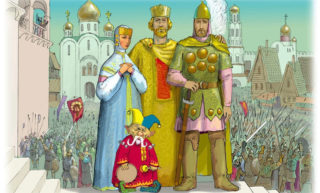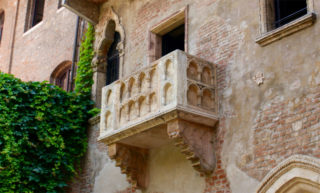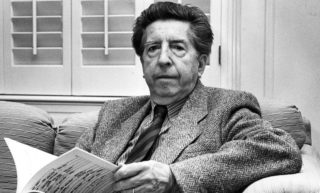Songs of sorrow and joy
Sinfonieorchester Basel
6 and 7 June 2018
Antoine Lederlin, Violoncello
Bertrand Chamayou, Piano
Ivor Bolton, Conductor
Gabriel Fauré - Overture to Pénélope
Camille Saint-Saëns - Concerto for Piano and Orchestra No. 2
Igor Stravinsky - Chant funèbre
Gabriel Fauré - Élégie
Igor Stravinsky - Chant du Rossignol
With an elegy and a funeral song the SOB lays this season to rest.
The Chant Funèbre (funeral song), written in 1908 when Stravinksy still was a relatively unknown composer, is a commemoration of his teacher Rimsky-Korsakov. The piece is a musical depiction of the funeral procession where each instrument pays tribute to the deceased composer. If you listen carefully, you can hear the same melody return in different disguises; each time the key, the phrasing or the instrument changes. After its first performance, the score was considered lost in the chaotic period following the Russian revolution, but was rediscovered during the renovation of a music library in Saint Petersburg in 2015. In this work Stravinsky is indebted to Rimsky, but the composition also bears traces of Wagner’s Funeral music from Siegfried. As we have seen so often this season, Wagner’s influence spreads far and wide.
Just like Stravinksy’s funeral song, Fauré’s Élégie – originally written for cello and piano (1880), but orchestrated by the composer fifteen years later – was an early work. The piece was envisioned as the slow movement of a sonata, but for unknown reasons Fauré (1845 – 1924) decided to leave it as a stand-alone composition. It was probaby its rather dark acoustic colour that led the composer to give it its current title.
Fauré was a pupil and friend of the former child prodigy Saint-Saëns (1835 – 1921). Saint-Saëns allegedly used a draft by Fauré as the main theme of his second piano concerto’s first movement. The concerto, an effervescent composition, betokens his later Le Carnaval des Animaux and is often seen as a pastiche of different musical styles. Bach (first movement) and Mendelssohn (second) are audible sources of inspiration. The concerto concludes with a wild tarantella that reminds of Offenbach.
Saint-Saëns’s concerto is preceded by the overture to Fauré’s opera Pénélope. Although Fauré is said to have remained a very French composer throughout his life, Pénélope uses concepts that are distinctly Wagnerian, such as the leitmotif. Despite that, German newpapers were generally lukewarm about Fauré’s work, which- to make things worse – got pushed into oblivion by the premiere of Stravinsky’s scandalous The Rite of Spring, only three weeks after the Parisian maiden performance of Pénélope.
It was around the same time that Stravinksy composed his opera Le Rossignol (The Nightingale) that he later reworked into a symphonic poem. Renamed Le Chant du Rossignol (The Song of the Nightingale) it is based on an Andersen fairytale about a nightingale that sings for the Chinese emperor. When a mechanical nightingale gifted by the Japanese monarch enthralls the emperor and his royal household, the real nightingale disappears. Notified of the imminent death by grief over the lost bird, the nightingale comes back to the emperor, only to return to nature after the emperor’s recovery. The contrast between natural and mechanical is central to the piece, in which the flute, obviously, is the shining star and Eastern-Asian themes spice up the melodic material.
These English program notes have been published in the magazine (No. 8, 2017/2018) of the Sinfonieorchester Basel.








Comments